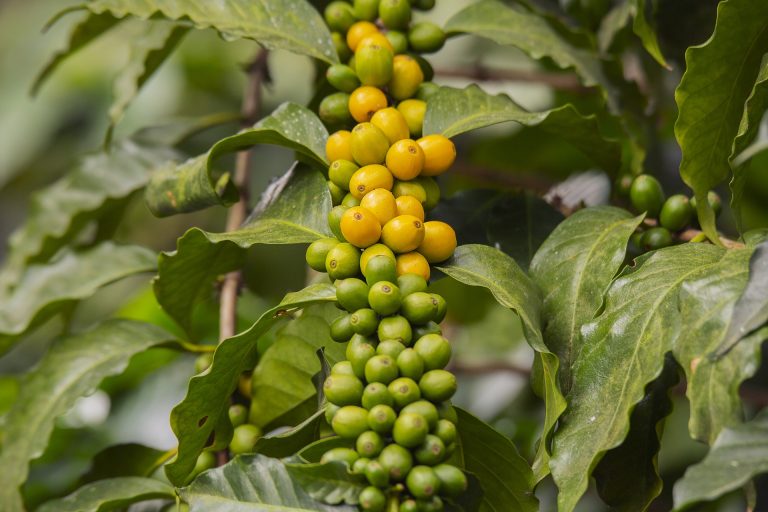Unveiling the Complexities of Coffee: A Comprehensive Research Journey
Introduction
Coffee, a beverage cherished worldwide for its stimulating effects and rich aroma, has a storied history spanning centuries. Derived from the seeds of the Coffea plant, coffee has evolved from a traditional drink in Ethiopia to a global phenomenon with diverse cultural significance. This research article aims to explore the historical origins, botanical characteristics, cultivation methods, chemical composition, health effects, and cultural impact of coffee, providing a thorough examination of its multifaceted nature.

Historical Origins and Evolution
The history of coffee began in the highlands of Ethiopia, where legend says that a goat herder named Kaldi discovered the energizing effects of coffee beans after noticing his goats became energetic upon consuming them. From Ethiopia, this coffee outspread to the Arabian Peninsula, from where it was cultivated and traded by Arab merchants. By the 15th century, coffee had become an integral part of Islamic culture, with coffee houses (known as qahveh khaneh) serving as centers for socializing, intellectual discourse, and political exchange.
Coffee’s journey continued across the Ottoman Empire and into Europe, where it gained popularity during the Age of Exploration. Coffee houses proliferated in major European cities like London, Paris, and Vienna, becoming hubs of cultural exchange and innovation. In the 17th and 18th centuries, European colonial powers introduced coffee cultivation to regions such as the Caribbean, Central and South America, and Southeast Asia, transforming coffee into a global commodity.
Botanical Characteristics and Cultivation
Coffee is derived from the seeds (commonly referred to as beans) of the Coffea plant, which belongs to the family Rubiaceae. The most widely cultivated species of coffee include Coffea arabica and Coffea canephora (commonly known as Robusta). These plants thrive in tropical and subtropical climates, requiring specific conditions such as well-drained soil, adequate rainfall, and moderate temperatures to flourish.
Coffee cultivation involves several stages, including planting, pruning, fertilizing, and harvesting. The coffee cherries, which contain the seeds, are typically harvested once they reach optimal ripeness. The beans undergo processing methods such as dry processing (natural), wet processing (washed), or semi-dry processing (pulped natural) to remove the cherry pulp and prepare them for roasting.

Chemical Composition of Coffee
Coffee beans are complex entities containing hundreds of compounds that contribute to its aroma, flavor, and physiological effects. The primary chemical components of roasted coffee beans include:
- Caffeine: A natural stimulant that affects the central nervous system, enhancing alertness and reducing fatigue.
- Polyphenols: Antioxidant compounds that contribute to coffee’s bitter taste and potential health benefits, such as chlorogenic acids and flavonoids.
- Carbohydrates: Sugars and polysaccharides that undergo Maillard reaction and caramelization during roasting, contributing to coffee’s flavor profile.
- Lipids: Oils and fatty acids that affect mouthfeel and contribute to aroma development during roasting.
- Acids: Organic acids such as chlorogenic, quinic, citric, and acetic acids that influence coffee’s acidity and flavor balance.
Health Effects and Benefits
Coffee consumption has been studied extensively for its potential health effects, yielding a nuanced understanding of its benefits and considerations:
- Cognitive Function: Caffeine in coffee improves alertness, concentration, and cognitive performance, potentially reducing the risk of neurodegenerative diseases like Alzheimer’s and Parkinson’s.
- Metabolic Health: Coffee consumption may lower the risk of type 2 diabetes, as well as improve insulin sensitivity and glucose metabolism.
- Cardiovascular Health: Moderate coffee intake has been associated with a reduced risk of cardiovascular diseases, possibly due to its antioxidant properties and effects on blood pressure.
- Liver Health: Coffee may protect against liver diseases, including cirrhosis and liver cancer, by reducing inflammation and enhancing liver function.
- Mood and Mental Health: Regular coffee consumption has been linked to a lower risk of depression and improved mood regulation.
While coffee offers potential health benefits, individual responses to caffeine can vary, and excessive consumption may lead to adverse effects such as insomnia, jitteriness, and increased heart rate. It’s important to consume coffee in moderation and consider personal tolerance levels.

Cultural Significance and Rituals
Coffee’s cultural significance spans continents and centuries, influencing social customs, traditions, and daily rituals. In many cultures, coffee drinking is a communal activity that fosters social bonds, facilitates conversation, and serves as a symbol of hospitality. From the traditional Ethiopian coffee ceremony to the Italian espresso culture and the specialty coffee movements in urban centers worldwide, coffee plays a pivotal role in social interactions and cultural practices.
Coffee houses, cafes, and specialty coffee shops serve as gathering places for artists, intellectuals, and professionals, providing spaces for creativity, discussion, and collaboration. The emergence of coffee culture has sparked trends in coffee preparation methods, such as pour-over, French press, espresso, and cold brew, each highlighting distinct flavor profiles and sensory experiences.
Sustainable Practices and Global Trade
Coffee production and trade have significant economic implications for producing countries, where coffee farming supports livelihoods and contributes to national economies. However, the coffee industry faces challenges related to sustainability, including environmental impact, fair trade practices, and climate change resilience. Efforts to promote sustainable coffee farming practices, such as shade-grown cultivation, organic certification, and direct trade relationships, aim to mitigate environmental degradation and promote equitable economic opportunities for coffee farmers.

Conclusion
In conclusion, coffee stands as more than just a popular beverage—it embodies a rich tapestry of history, science, culture, and commerce that continues to evolve and captivate global audiences. From its humble origins in Ethiopia to its global reach and diverse manifestations, coffee exemplifies resilience, adaptability, and innovation. Whether enjoyed for its invigorating effects, complex flavors, or cultural significance, coffee remains an enduring symbol of human ingenuity and connection.
Through this comprehensive exploration of coffee, it becomes clear that its allure extends beyond mere consumption—it represents a shared experience that transcends borders, languages, and generations. Whether you’re savoring a morning cup of espresso, exploring artisanal coffee blends, or contemplating the intricacies of coffee cultivation, each sip offers a glimpse into the intricate web of history, chemistry, and culture that defines coffee’s enduring legacy in the modern world.

